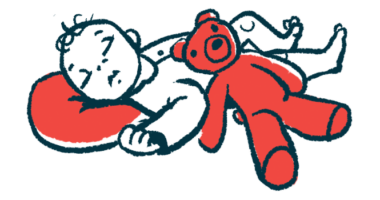Muscle-directed gene therapy found effective in new rat model of IOPD
'Important milestone' model can better mimic disease features seen in humans

A gene therapy designed to travel into muscles resulted in widespread production of the enzyme that’s missing or faulty in Pompe disease, according to a study that also describes a new rat model of the infantile-onset form of the disease.
Researchers also observed that rats given a single injection of the gene therapy directly into the bloodstream had normalized levels of a sugar called glycogen, grew larger and stronger muscles, and lived longer than those given a placebo.
“This gene therapy holds great potential,” they wrote in the study, “Treatment of infantile-onset Pompe disease in a rat model with muscle-directed AAV gene therapy,” which was published in Molecular Metabolism.
Pompe disease is caused by mutations in the GAA gene, which codes for alpha-glucosidase (GAA), an enzyme that breaks down glycogen. Without GAA, glycogen accumulates to toxic levels in cells, especially those in the muscles, where glycogen is stored as an energy reserve.
Symptoms of infantile-onset Pompe disease (IOPD), one of the three types of Pompe disease, usually manifest in the first year of life. They include slow growth, muscle weakness, heart problems, and difficulty breathing. Untreated, children don’t usually live past the first two years.
Pompe gene therapy designed to deliver GAA gene copy to muscle cells
To deliver a working version of the GAA gene to muscle cells, the researchers designed a gene therapy that packages the working gene aboard AAVMYO3, an adeno-associated virus (AAV)-based delivery vector that’s been modified to head toward the muscles.
Once in the muscles, the working gene is unloaded from the vector, and muscle cells can use its instructions to make the GAA enzyme on their own. This is expected to reduce the toxic accumulation of glycogen and ease symptoms of Pompe disease.
Because existing mouse models “do not fully develop the critical features of human IOPD,” the researchers developed a new rat model by inserting a mutation in GAA that led to near-complete loss of the gene’s activity and to glycogen accumulating in the muscles over time.
Compared to wild-type (healthy) rats, those carrying two copies of that mutation had lower body weight, weaker muscles, and an enlarged liver and heart. They also lived shorter lives, “closely resembling human IOPD.”
“Translation of preclinical results into clinical trials has been challenging, owing in part to the limited ability of animal models to recapitulate disease features seen in humans,” the researchers wrote, adding the new rat model “represents an important milestone.”
Four-week-old rats were given a single injection of either AAVMYO3-Gaa or a placebo into the tail vein. Placebo-treated rats experienced slowed growth, whereas those given the gene therapy maintained body weight gains similar to those of wild-type rats.
Gene therapy led to widespread distribution of working gene in muscles
The gene therapy led to widespread distribution of the working gene throughout the muscles in the body, but not in the liver. This is important because it may allow for higher doses while avoiding damage to the liver, the scientists noted.
With the gene therapy, the enzyme’s activity increased in all muscles to levels two to four times higher than those of wild-type rats, which helped to break down the excess glycogen.
Moreover, rats given AAVMYO3-Gaa didn’t develop an enlarged heart. Their muscles grew as large and as strong as those of wild-type rats, based on the results of tests measuring muscle mass and grip strength.
“Altogether, this work supports the clinical translation of this muscle-specific strategy based on engineered AAV vectors as a new therapeutic option not only for human [Pompe disease], but also for other inherited muscle diseases,” the researchers wrote.
“These results open a new window to safer gene therapy approaches for diseases with muscular involvement, enabling the use of lower doses that achieve high and widespread transduction efficiency,” they concluded.








